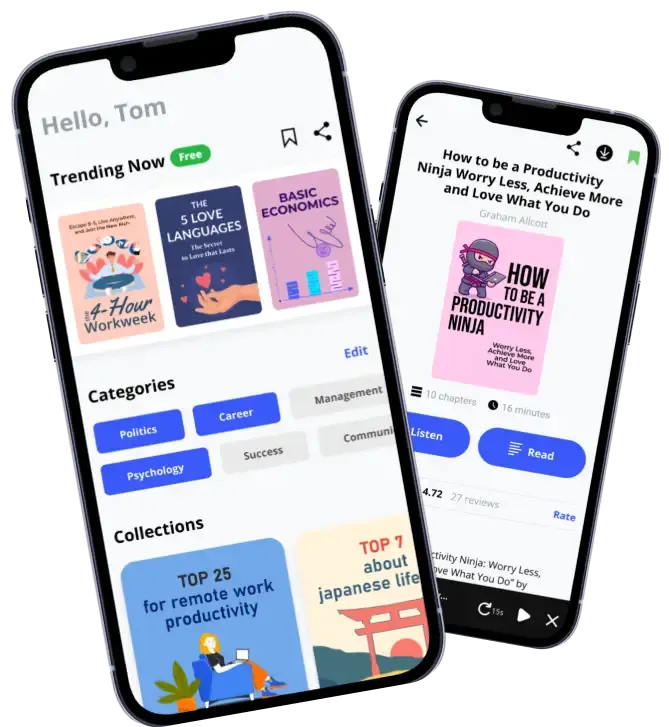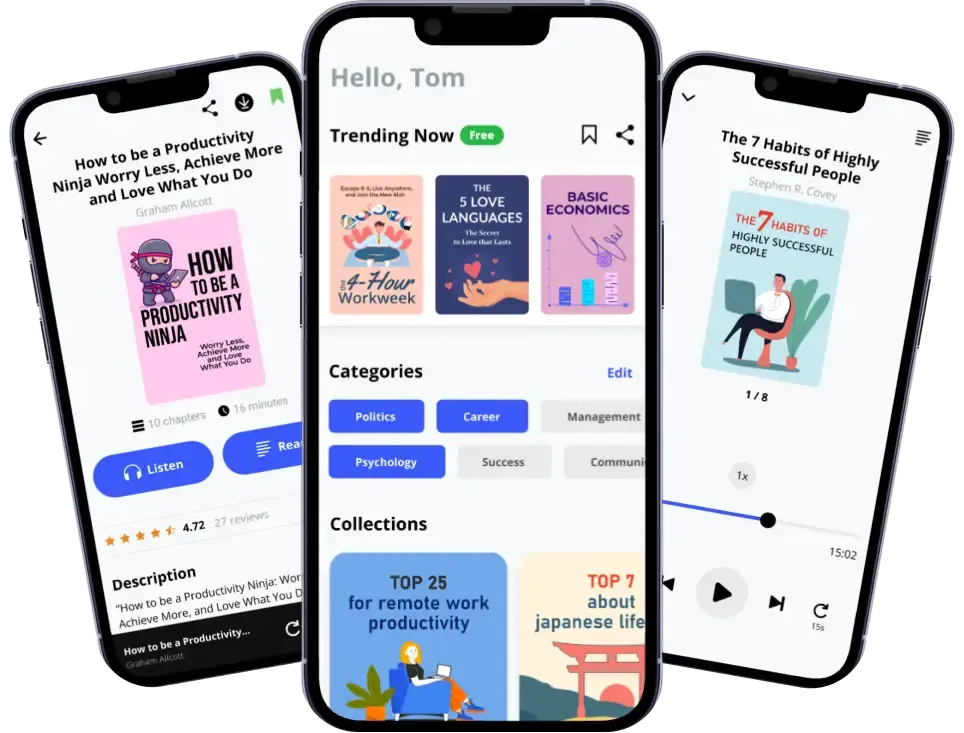Change your reading path from linear to vertical
Ever since school, we have been accustomed to hearing that to understand a text well, we need to read every word. Skimming was considered a form of cheating. But in fact, speed reading can be equally effective if you train your brain to catch the meaning quickly and just as productively.
To start, try reading diagonally and vertically instead of linearly. To make the process more convenient, trace the trajectory with your finger or a business card, covering the text above the line you are following. Never close the text below, revealing only the text you've already read. This will develop a bad habit that regresses your brain.
Practice reading without parallel pronunciation
For better material assimilation and concentration, we may read the text out loud or repeat it. But, in fact, this only slows down our pace without really increasing the level of engagement in the text. The key is to catch yourself repeating along in time, both out loud or in your mind. To stop this, you may, for instance, force yourself to hum the same melody mentally.

Concentrate on engaging your brain fully
When unfocused, we divide our attention between dozens of things and fail to find balance. But when we are focused on work, we feel less boredom and tiredness, saving energy until the end of the task. The main tip for motivation at work is to determine why exactly you are immersed in this text. Then, while working, remove everything that can distract you – people, technology, or an inconvenient location. Work with classical music and at the time of day that boosts your productivity. Furthermore, do not forget to take breaks every half hour.
Expand your vision span
Our eyes are windows of the mind. Therefore, when we read a text, we perceive precisely as many words as we see. Accordingly, if we expand the length of our gaze, we will be able to process more text in less time.
By expanding your perception, you will be able to more easily catch keywords from the text. As a practice, try to take a small text and stop your gaze only on the main words, ignoring everything else. A small note: keywords are usually longer than others. Soon enough, you will see that large and complex materials don’t scare you anymore.
Preview before reading to get the gist of the text more easily
It is harder for us to concentrate when the topic of the text or the presentation is completely unfamiliar. Therefore, it is always helpful to do a short preview of the text in case you feel lost at the beginning. During the preview, pay attention to the headings, highlighted words, first sentences of paragraphs, summaries, and any visual information such as graphs or pictures. Most likely, by the end of the first skimming, you will already have enough gist understanding for a deeper reading.
Approach text critically to integrate it into long-term memory
A good habit is to read the text critically. This means having a certain attitude toward each idea of the author, asking questions about the text, and looking for confirmation or denial of your background experience. If the text passes consciously through your mind, it will become part of your knowledge.
Always rely on keywords and don't waste time on unnecessary information
You do not have to remember everything you read. This is impossible, even if you pay attention to every detail. In a couple of days after reading, the details will be erased from your memory, and in a couple of months – the main part of the text as well. Therefore, read only those parts of the text that are directly necessary. A good habit is to mark keywords; this way you can refresh your knowledge faster over time.

Use different techniques depending on your goal
Monitor your reading, speeding up and slowing down when necessary. If possible, use the skip, scan, and skim techniques. Skipping means omitting unimportant information. On the other hand, skimming involves checking the entire text for its relevance to us and determining the main idea. At the same time, scanning is determining one necessary part of the text, which you then delve into.
Work more deeply with technical texts
Often, we struggle with the perception of technical texts that contain a lot of unfamiliar terminology. In these cases, the problem lies in the lack of background knowledge. To solve this, research additionally or look up unknown terms in a dictionary. Preview the text, and after reading, recall the main ideas to consolidate the knowledge in your head. This way, you will build up a solid base of background knowledge and will be able to navigate technical texts faster next time.

Work with the text more thoroughly, making notes
Taking notes during reading helps assimilation of the knowledge. You will find that writing down already helps you memorize the knowledge for a long time. Use anything – a notebook, a phone, or the margins of a book. Anything where you can return to the ideas quickly. This will not only refresh your memory but also give you a boost to new thoughts.

10 Days to Faster Reading
Now, you know how to act when facing a voluminous text. Such a skill turns into a superpower in our accelerated world. Improve your concentration and critical thinking, and you will become an indispensable professional. Time to challenge your brain and let it upgrade!
Credentials:










